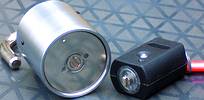

The UniLock system strikes a balance between traditional physical security and advanced electronic technology that allows for full audit trails and selected access times to be programmed.
Locally developed and internationally patented, the locking system is designed to allow expansion and flexibility both mechanically and electronically.
According to UniLock director, Peter Kowalczyk, the system is intelligent, robust, extremely secure, exceptionally strong, cost effective and multifunctional. "Containing all of the strengths and deterrents of the traditional lock or padlock, the UniLock improves in every way upon the age old weaknesses of all key locks. It is not possible to duplicate keys; there is no keyhole, so lock-picking is ruled out; the lock is reprogrammable so there is no need to replace it if the keys are lost; and the lock keyway surface rotates freely unless anything but the correct key is used," he says, pointing out some of the security benefits.
All power to the UniLock cylinder is generated by the key, so there is no possibility of a lock not functioning because of a flat battery within the lock. The lock does not require any wiring and the system is extremely power efficient.
The lock is programmed directly via the key - no other equipment needs to be carried to the lock, nor does the lock need to be removed.
Both the key and the lock share and store the same electronic information, including audit trail, which is valuable in the event of a 'lost' key.
All keys can be read or re-programmed by a small key interface unit. This can include features such as making an inactive key become active for a short interval, or determining when and where a specific key was last used. The lock and key communicate via a sealed infrared link - there is no radio signal code to be intercepted.
The UniLock also uses encryption software that allows total separation of different customers. This is the electronic equivalent of having two keys with the same cuts, but with different keyhole shapes.
All data stored in the key and the lock is saved in a non-volatile memory and deletion of this or opening of the lock through electro-static or electro-magnetic forces is impossible.
The UniLock allows for the same functionality of conventional locks, with far greater flexibility, when it comes to keying alike different locks to a single key, or for master keying different levels of access into different keys.
For more information contact Peter Kowalczyk, UniLock, 011 764 5240, [email protected]

© Technews Publishing (Pty) Ltd. | All Rights Reserved.